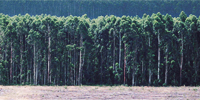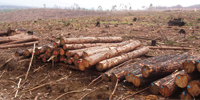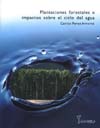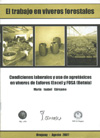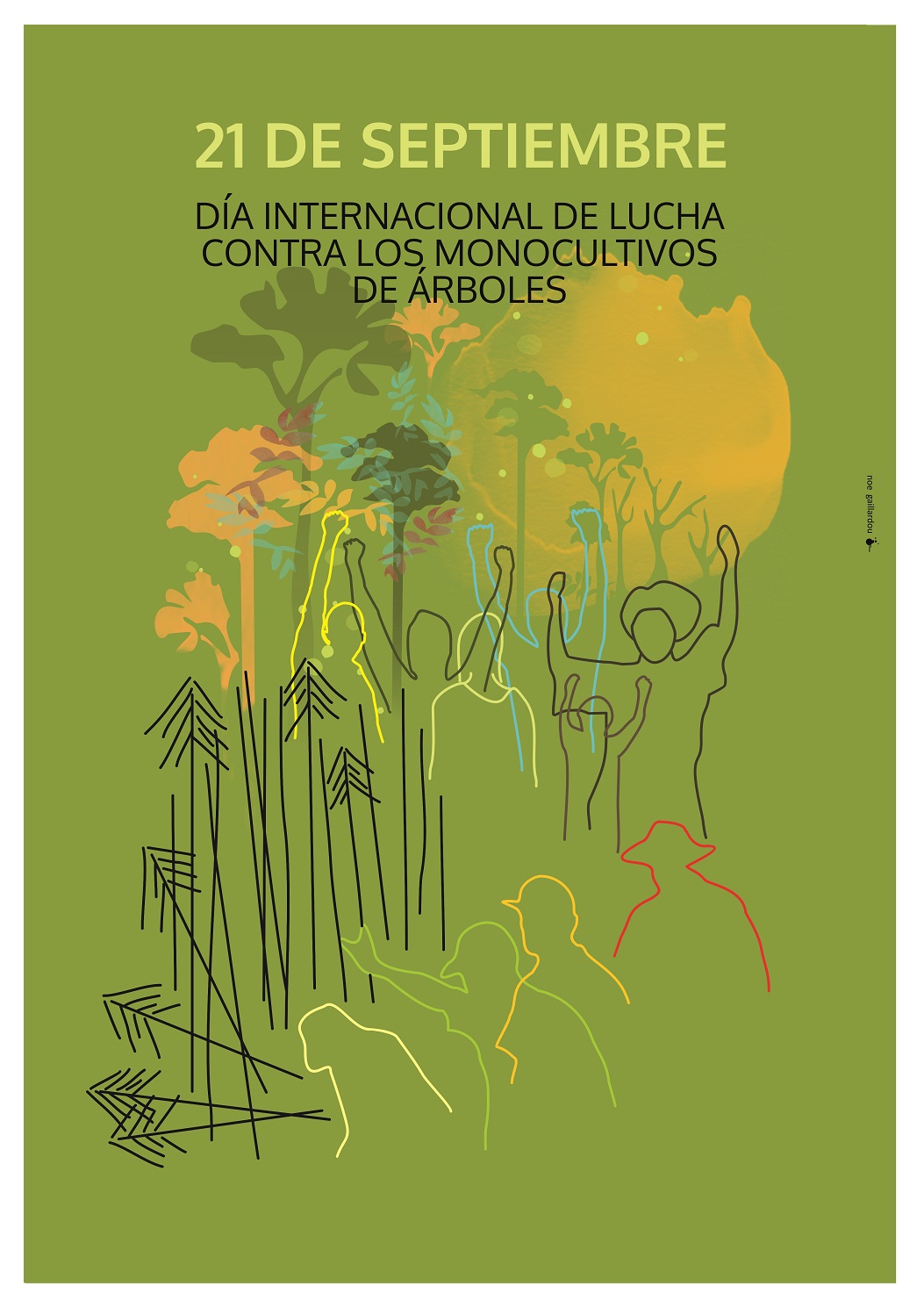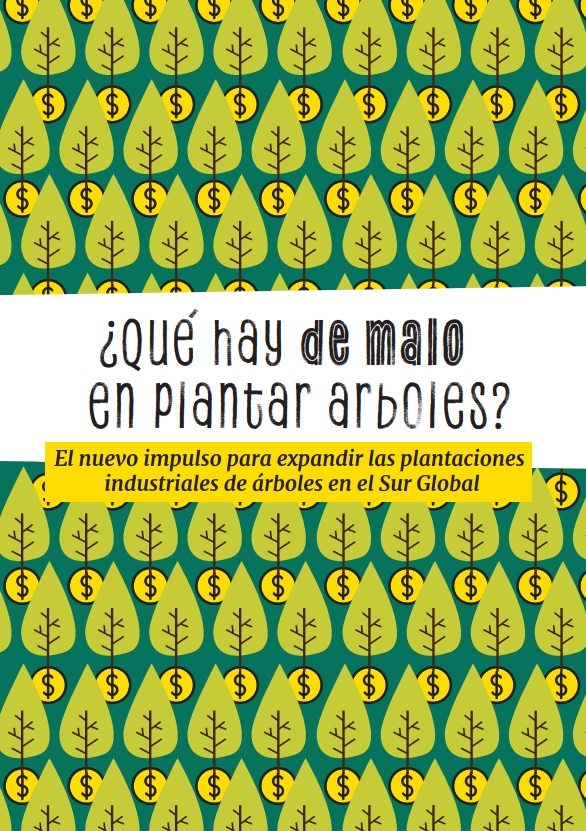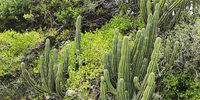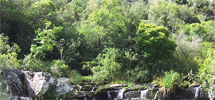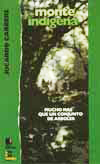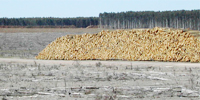One of the promises made by plantation companies to gain support – from the government and from local communities – is that they will create employment. What they fail to specify beforehand is the type of employment they will create and under what kind of working conditions, in terms of both salaries and workers’ health and safety.
The majority of jobs on tree plantations, except for pruning, involve the use of agrotoxic substances at one stage or another. In the nurseries where the seedlings are raised, it is mainly fungicides that are used, on an ongoing basis. Preparing the land for planting involves the use of chemical herbicides, fertilizers and insecticides. After the trees are planted, agrotoxic chemicals continue to be applied for a year to control the growth of weeds. Finally, when the trees are thinned or logged, herbicides are used once again to eliminate the sprouts.
A recent study by PAN-Uruguay on tree plantation workers and agrotoxic substance use (see “Uruguay: trabajo y agrotóxicos en la forestación” inhttp://www.rapaluruguay.org/agrotoxicos/Uruguay/FOSA.pdf) reveals some interesting facts. The research was carried out on plantations operated by FOSA (Forestal Oriental S.A.), a transnational company that is owned by UPM (formerly Botnia) and which among other things is certified by the Forest Stewardship Council (FSC).
The study provides a detailed list of the chemical substances used by the company, including different herbicides (acetochlor, glyphosate, oxyfluorfen, haloxyfop-methyl), the insecticide fipronil, and various fertilizers (ammonium sulphate, phosphate), noting that these substances are potentially carcinogenic and can cause hormonal alterations, among other health impacts. Therefore, as the study reveals, while it is true that the substances used on the plantations are authorized by the Uruguayan Ministry of Agriculture, Livestock and Fisheries and by the FSC, it is no less true that they are all highly toxic, both for the workers who handle them and for the environment.
The use of these agro-toxic products means that workers are subjected to ongoing, prolonged, daily exposure to chemical substances. Moreover, some workplaces do not provide sufficient drinking water or adequate hygienic conditions, which aggravates exposure to these substances. The half hour that workers are allowed for lunch is not enough time to fully remove their protective gear or to properly wash their hands, and so most normally only take off their gloves and masks to eat.
The workers reported that “the way the company hires workers is by announcing that there are job openings, and those who are interested can sign up.” Potential candidates then make a first visit to the site and “check” for themselves whether or not they are fit to do the work required, because if they suffer adverse reactions to the products being used (headaches, vomiting, dizziness), they are obviously not cut out for it. In other words, the products used are so toxic that they allow for the “self-selection” of staff based on their ability to physically withstand them. The wife of one of the workers added that “after I washed his coveralls I would throw the water [from the wash tub] on the grass, and it would turn brown, as if it had been burned.”
Another point that should be stressed is that the work of applying these substances with a backpack sprayer – categorized as unskilled labour, despite the degree of specialization involved – is carried out on a piecework basis. This demands high levels of output if workers hope to earn a decent day’s wages, and on days when bad weather keeps them from working, they don’t get paid at all. Walking long distances over vast stretches of land among weeds and furrows carrying a backpack that weighs around 16 kilos makes it almost impossible to withstand wearing a protective suit, especially in the summer.
One woman reported that “every worker had to cover a melga (the width between two furrows). You had to hurry, because everything was scheduled for the work to be completed in a certain amount of time, without taking into account the temperature or how ‘dirty’ the fields were.”
According to the testimony of another worker, the hot summer season is the worst. “When we took off our coveralls it was like they’d been taken out of a pail of water, they were soaked with sweat.” “After walking 30 metres you feel like you can’t walk anymore. But you have to walk for kilometres. The ground isn’t level, you have to walk up and down hills, and it’s exhausting. Between the weight you have to carry and the high shrubs it’s really difficult to walk. You end up with terrible knee pains. You have to walk long distances carrying a lot of weight, and you get blisters and calluses from walking so much.”
“The weeds are tall and some of them have thorns, like tutía (sticky nightshade), thistle and amor seco, which has tiny thorns that stick to your coveralls around knee-height. You also have to be really careful to make sure the thorns don’t tear a hole in the hose, because even if that happens you have to keep working, because if you stop, you don’t get paid. Since you have to meet a minimum quota, you have to move really fast and sometimes you even have to run. Sometimes when you’re rushing, the cap on the backpack sprayer comes loose and it drips onto your body.”
On top of all of this, workers are hired through outsourcing or subcontracting. This system and the fact that work crews are constantly moved around makes union organization difficult, since workers are isolated in small groups, working under the orders and rules of the subcontracting company that hired them. This lack of organization prevents workers from being able to demand better pay, better occupational health protection, and other workers’ rights.
One worker clarified that “there is no union organization in Forestal Oriental. There is also very strong social pressure against unions, and the way that workers are hired, through subcontracting companies, makes organizing very difficult.”
The chemical products used also affect the fauna. They accumulate in the soil and get into local waterways, by seeping through the soil or being washed into the waterways by rain. Some of the consequences of the resulting contamination include the death of hares as well as armadillos and other species of native fauna; the degradation of the soil, which suffers a significant loss of organic matter and an increase in acidity, leading in turn to the alteration of normal values of other physiochemical properties; the contamination of water in wells and cisterns used for human consumption; and the death of fish in freshwater rivers.
Meanwhile, the PAN-Uruguay report reveals that Forestal Oriental, in conjunction with Bio-Uruguay (a private institution), carried out a research study into biological pest control of leaf-cutting ants (the insect that poses the greatest threat to plantations) using entomopathogenic fungi (see http://www.biouruguay.org/noticias/photos/informefinal%20hormigas2.pdf). What does this mean? That in view of the danger posed by fipronil – which is now recognized as being highly toxic not only to bees but also to human beings – a non-polluting alternative was found for controlling leaf-cutting ants using a native fungus considered harmless for the people handling it and for the environment. But although this research was completed in May 2008, the company is still not using this safe alternative solution on its plantations.
Despite all of the above, the company is protected behind the green label granted by the FSC (a label that has been discredited internationally, partly because of endorsing practices like these), which certifies its plantations as “environmentally appropriate, socially beneficial and economically viable.” The case of FOSA provides overwhelming proof that monoculture tree plantations cannot be legitimately certified, because they have serious impacts on the environment, obstruct the right of workers to organize, endanger the health of workers, and economically benefit the plantation companies alone.
Article based on “Uruguay: trabajo y agrotóxicos en la forestación”, a joint publication of Rap-Al Uruguay (http://www.rapaluruguay.org) and Rel-UITA (www.rel-uita.org) authored by María Isabel Cárcamo, e-mail: coord@rapaluruguay.org. The publication is availabe at http://www.rapaluruguay.org/agrotoxicos/Uruguay/FOSA.pdf

